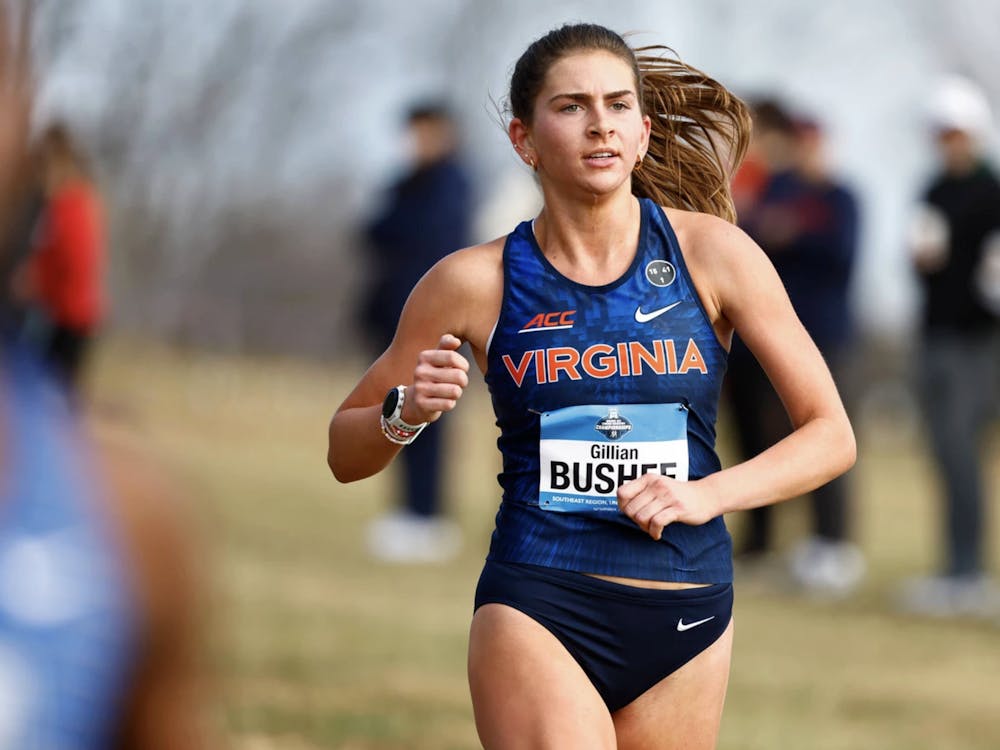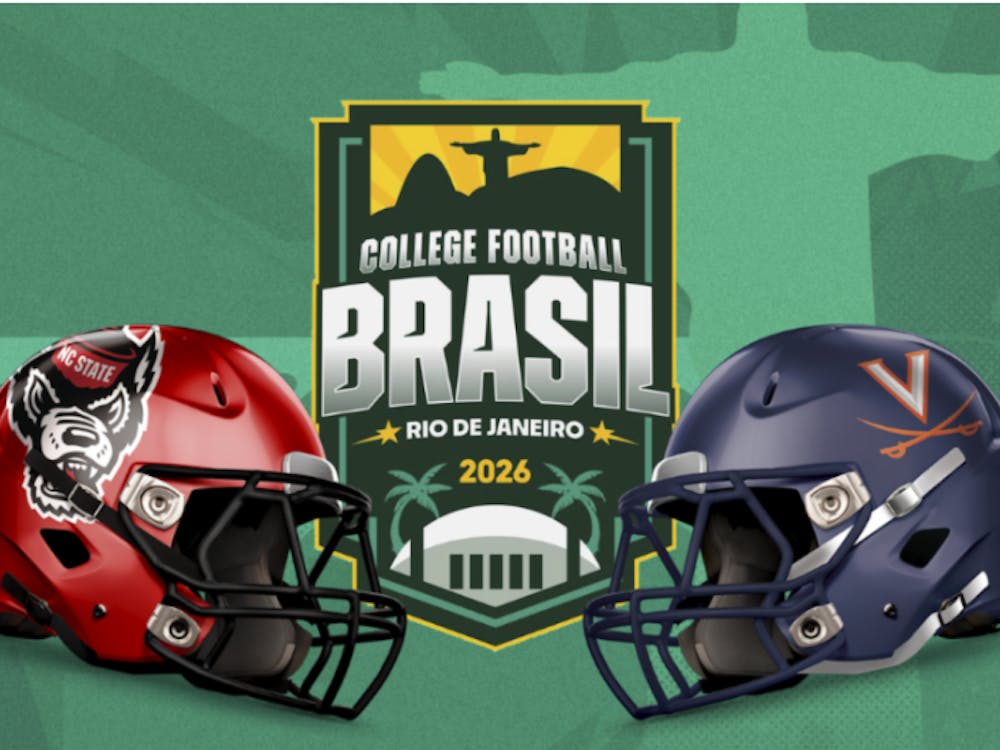I am about to do something I doubt any other sports columnist has ever done before. For the next 107 lines, several paragraphs and few hundred words, I’m going to talk about food.
Not just any food, though. John Paul Jones Arena food. Athlete food. Real. Good. Food.
You like Newcomb Dining Hall’s turkey dinner? That’s because you’ve never had JPJ’s flank steak. Can’t wait for Observatory Hill Dining Hall’s canned vegetables and chicken? I guess you haven’t tried the barbecue chicken breast with the fresh string beans and mashed sweet potatoes with cinnamon sugar at JPJ. Or the tilapia. Or tuna steak. Or the smoothies that they make for dessert.
Wait — don’t stop reading now. The “suggestion cards” at Newcomb and O-Hill will still be there when you’re done.
No, JPJ has much more to offer than just the food. They have flat-screen TVs lining the entire interior. It’s like the showroom at Circuit City. If our 6-foot-8 power forward walks into your line of sight, just watch the plasma screen 20 inches to the right. And, what else would be on, but ESPN.
Not sure how many calories are in that pasta? Just check out the display card below — it’ll tell you everything you want to know. By the time you’re ready to walk to your seat, you’ll know how many calories — and how many grams of protein, fat and carbohydrates — are on your tray (yes, JPJ still has them).
Or maybe you’re not sure exactly what types of food you should be eating. No problem — just ask the nutritionist. He’ll tell you exactly what your diet should consist of based on whether you are trying to maintain your weight or add muscle.
If the University of Virginia is a microcosm of the world, then JPJ is the country club. Not just because it’s nice, but because it’s exclusive: athletes only. The sole way for a non-athlete to go is to have a varsity player swipe him in. (Thanks, Andrew.)
But the exclusivity in this situation is a good thing. It gives the athletes a haven after practice without fighting 10-minute lines at O-Hill. It also gives them a good meal — access to steak and fish instead of chicken nuggets and french fries.
The amenities at JPJ extend beyond the dining hall, though. Downstairs is the study center, where athletes can go to get their work done after dinner. You’ll also find there the academic advisors, who are responsible for tracking the grades of every player on a given team.
Before you go up in arms about the discrepancy between athlete facilities and non-athlete facilities, consider what you do between the hours of 2 p.m. and 6 p.m. every day for the entire year. Chances are, you’re not in practice or a meeting or at a lift. Athletes also have most weekends tied up for a good portion of either the fall or spring semester with away games.
To keep the “student” in the student-athlete, it’s critical that the athletic department has a place for them to study, has resources for them to make sure they don’t fall behind in classes and, perhaps most overlooked, has a place where they can go to get a good meal.
JPJ is a library, a kitchen and a social spot. Even more, it is a selling point for recruits. It gives Virginia an advantage in an area that is often overlooked by non-athletes: off-field resources.
Perhaps, among other things, the amenities at JPJ will sway that lanky 6-foot-6 shooting guard from California from going to a state school nearby. Perhaps he’ll come here and put on some muscle with the help of the nutritionist and flank steak. Perhaps he’ll break into the starting line-up by his sophomore year after a year’s worth of good workouts in JPJ’s state-of-the-art weight room. And perhaps he’ll be the one to hit the game-winning shot against Duke with time expiring.
And so, all of a sudden JPJ becomes much more than the basketball arena. It becomes a resource for players to become better student-athletes.
The really good food doesn’t hurt either.






